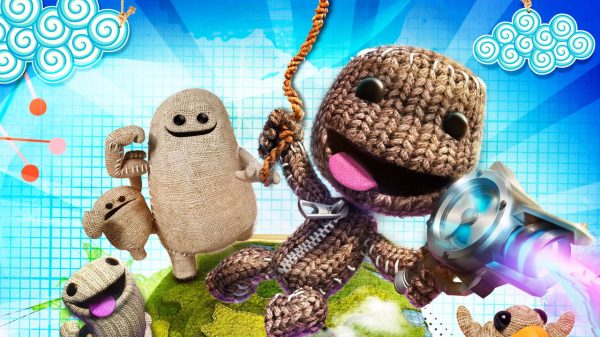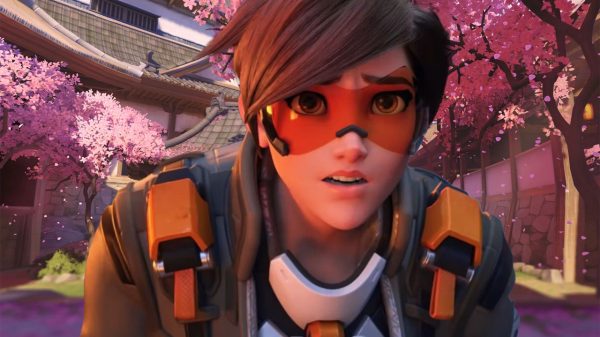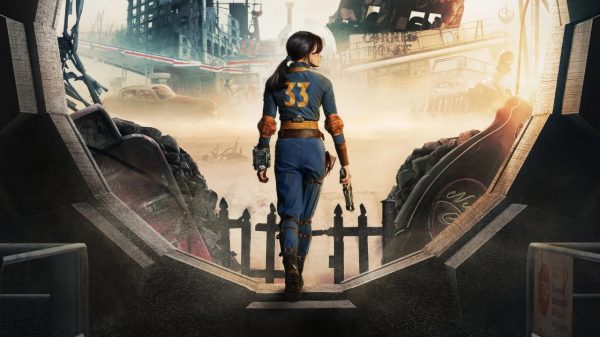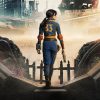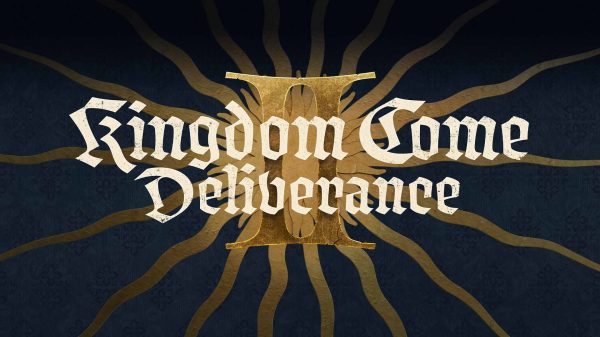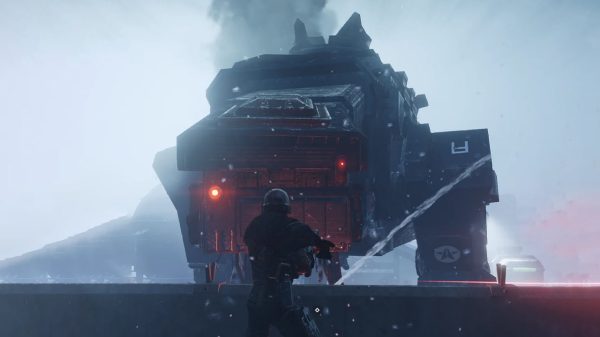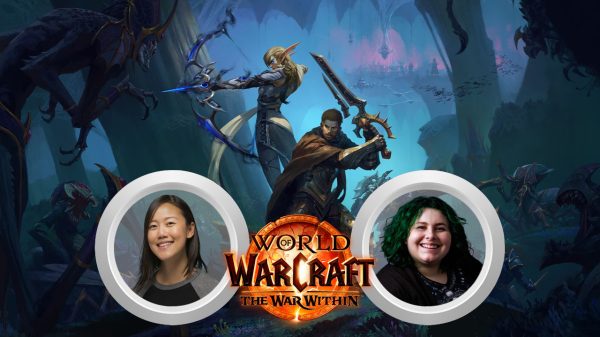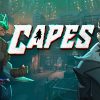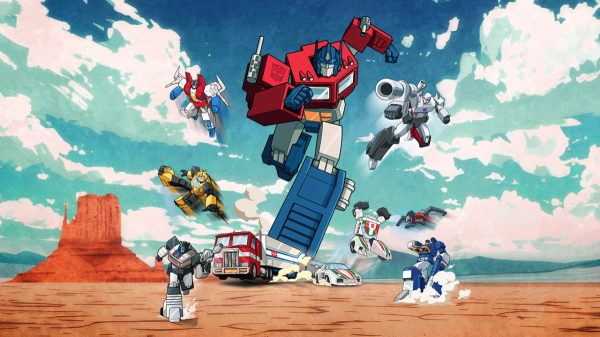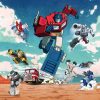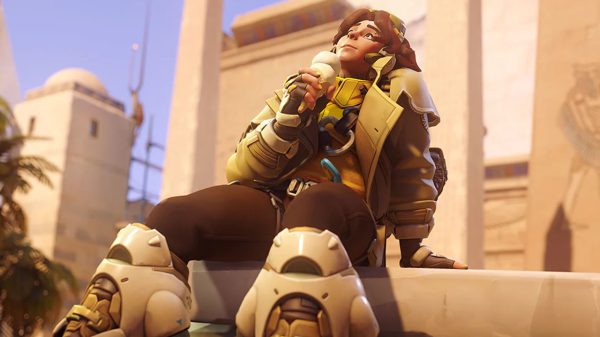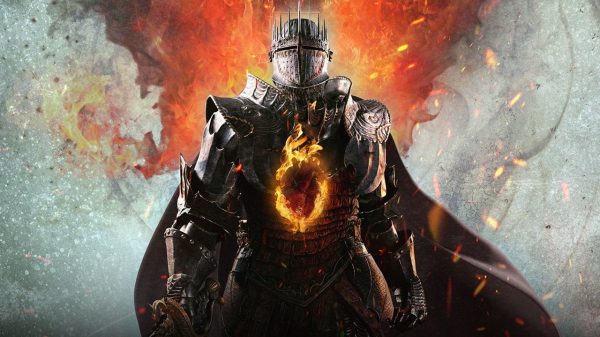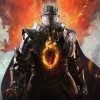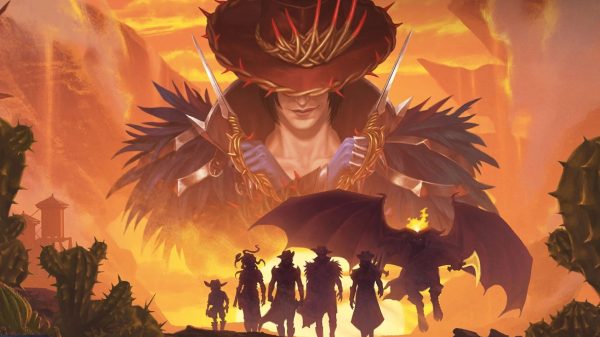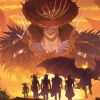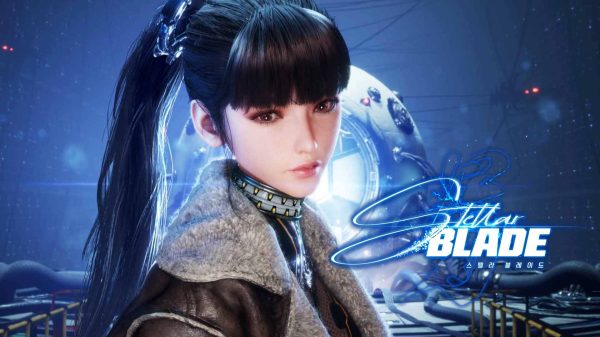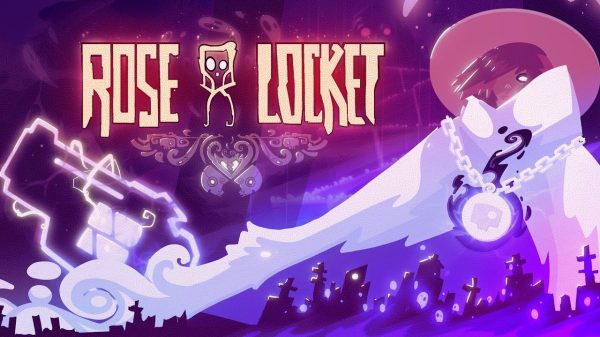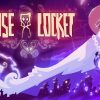Monster Hunter: World was a surprise for many people. Series veterans and newcomers alike flocked to the PS4 and Xbox One to play the action RPG when it released in January last year (PC players later joined in) and the game has found immense success, cementing itself as one of Capcom‘s most successful titles ever. The game’s following is massive and it has seen two major collaborations, the first with Final Fantasy XIV and then later with The Witcher. So here we find ourselves edging towards the release of its one and only major expansion, Iceborne. Capcom has been pushing this expansion like it was nobody’s business, showing off the new gameplay mechanics, environments and some returning monsters. Pretty much anyone who has enjoyed Monster Hunter: World is excited for this expansion, including myself. Thanks to the lovely people over at Turn Left Distribution/Capcom, I had a chance to play a preview build of Iceborne, which demonstrated what the expansion had to offer.
To kick things off, there is the context for the expansion. While it would be nice to just grab some staples and staple a new area to a game, there always has to be context as to why the area exists and why you’re going there. Iceborne kicks off with the mysterious behaviour of some Legiana (the one Ice monster currently in MHW) appearing in areas that they are not normally found in. Following the icy Bird Wyvern leads you and the Fifth Fleet to the frozen hinterlands known as ‘Hoarfrost Reach’. This new area is home to a variety of new threats and is the key to figuring out what exactly is going on with the Legiana and the other monsters. Like always, though, Iceborne isn’t really about the story. It more or less just serves as context and that’s it. Where the beauty of Iceborne lies is within its environments.
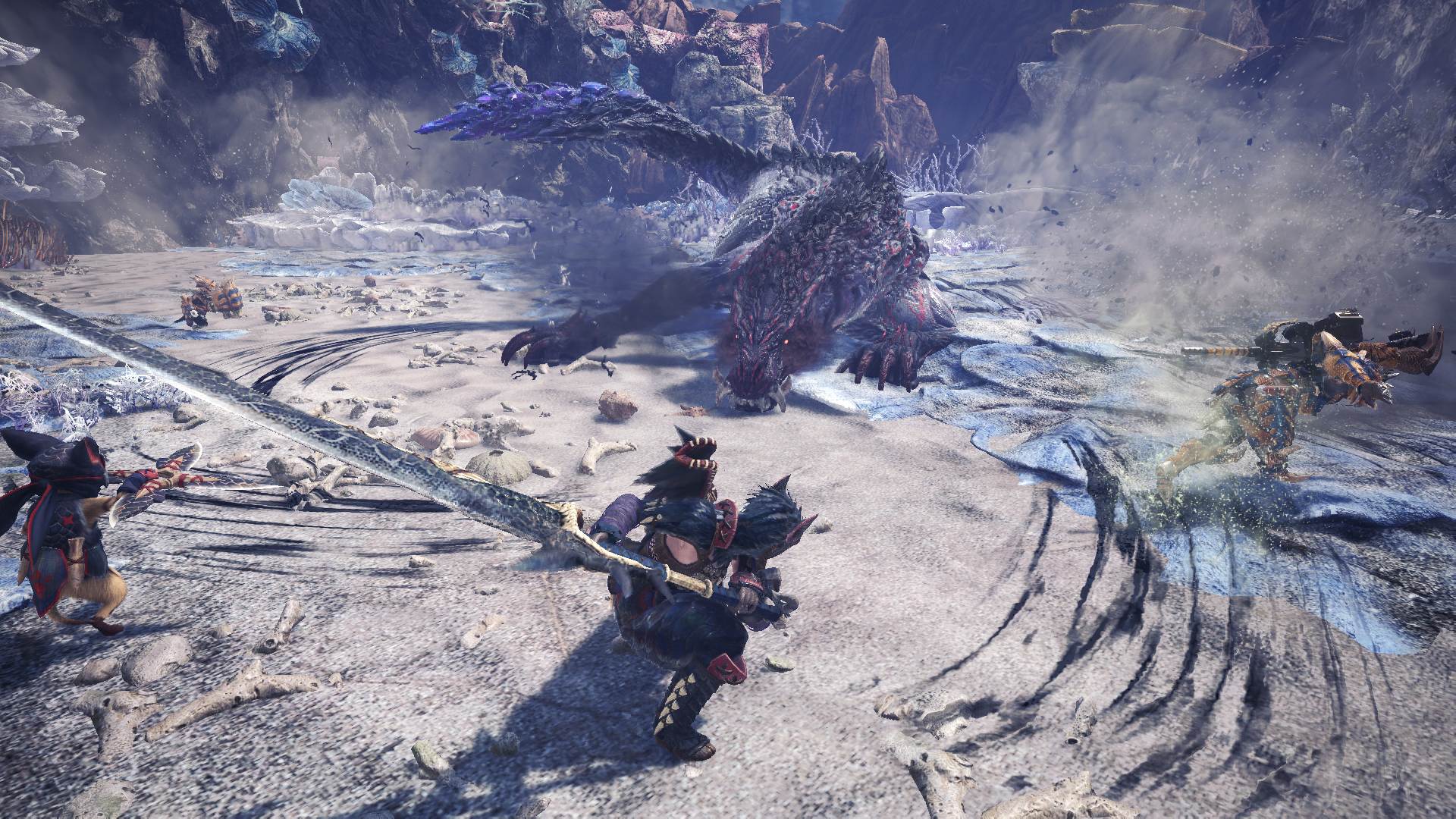
Hoarfrost Reach is a beautiful winter area which is home to a lot of familiar faces as well as some new ones. The game wastes no time in communicating the harsh, cold environment, by immediately changing your layered armour set to something akin to the Orion set that was available during the Winter Festival. In addition to this, we see the return of the cold weather mechanic that makes your stamina bar lose its max value a lot quicker than normal. To combat this, you have to craft and consume Hot Drink, which warms your body temperature right up and keeps you fighting at your best. While exploring the Hoarfrost Reach, you’ll become well acquainted with a few of the monsters that call this locale home, including Beotodus. Beotodus’ name should sound fairly similar to a monster that MHW players would have fought before, Jyuratodus. Unlike the Piscine Wyverns from World, Beotodus is more than happy to subject you to some of those infamous hip checks of old (though nowhere near as bad as the infamous Plesioth) and to add to that it can very easily apply the Iceblight debuff, making you consume far more stamina than normal. Nulberries are your best friend and Beotodus is not the only reason.
The actual level design of Hoarfrost Reach was really good. There is a lot of interconnectivity between channels and lanes which allow for multiple paths to be taken in order to end up in the same destination. The game feels like it’s trying to help guide you more than in any of the other areas. While there will be a lot of people that see this as “hand-holding”, it’s actually more conducive to effective design as players are less likely to get lost and, as a result, are in the action more – something which is crucial to Monster Hunter. Specific sections are varied enough that they test the player’s adaptability. An incredibly aggressive monster may be easy to read in a large, open environment, but how will you fare in a tight environment where movement is a little more restricted? A large monster may telegraph itself quite easily, but what if it used your environment against you? These are the questions the game asks of its players inside the Iceborne expansion and it’s up to you how they are answered.
Given my time with the Iceborne expansion, it’s safe to assume that I got to play against a fair chunk of the monsters that Iceborne has to offer. While I could go into detail about all the monsters that I fought, I’ll give you the highlights. Monster Hunter fans are quite accustomed to subspecies and variants of already existing monsters, Pink Rathian being a prime example of a subspecies in World. Iceborne introduces a number of subspecies including Nightshade Paolumu and Viper Tobi-Kadachi. Nightshade Paolumu is a sleep-oriented subspecies of Paolumu, the fluffy flying monster that resides in the Coral Highlands. This time the fluffy balloon creature resides in a different locale and brings with it a new lineup of attacks to throw at you. Its entire gameplay mechanic revolves around the sleeping mist which it spouts and through clever use of the monster’s animations, a familiar moveset gets used against you, as the sleeping mist gets moved around by a bunch of Nightshade Paolumu’s old moves. The moving sleeping hazard really keeps the players on their toes, either resorting to being incredibly mobile and aware of the danger or pack lots of energy drinks to stop yourself from sleeping (the immunity mantle is of great help too). Viper Tobi-Kadachi is a little less creative of a subspecies; players will be met with a toxic variant on the fanged wyvern who throws quills that inflict poison at various ranges. To add to this, Viper Tobi-Kadachi’s mouth also inflicts paralysis damage, so melee focused players that aren’t careful may find themselves in need of a slap from their Palico or fellow hunters.
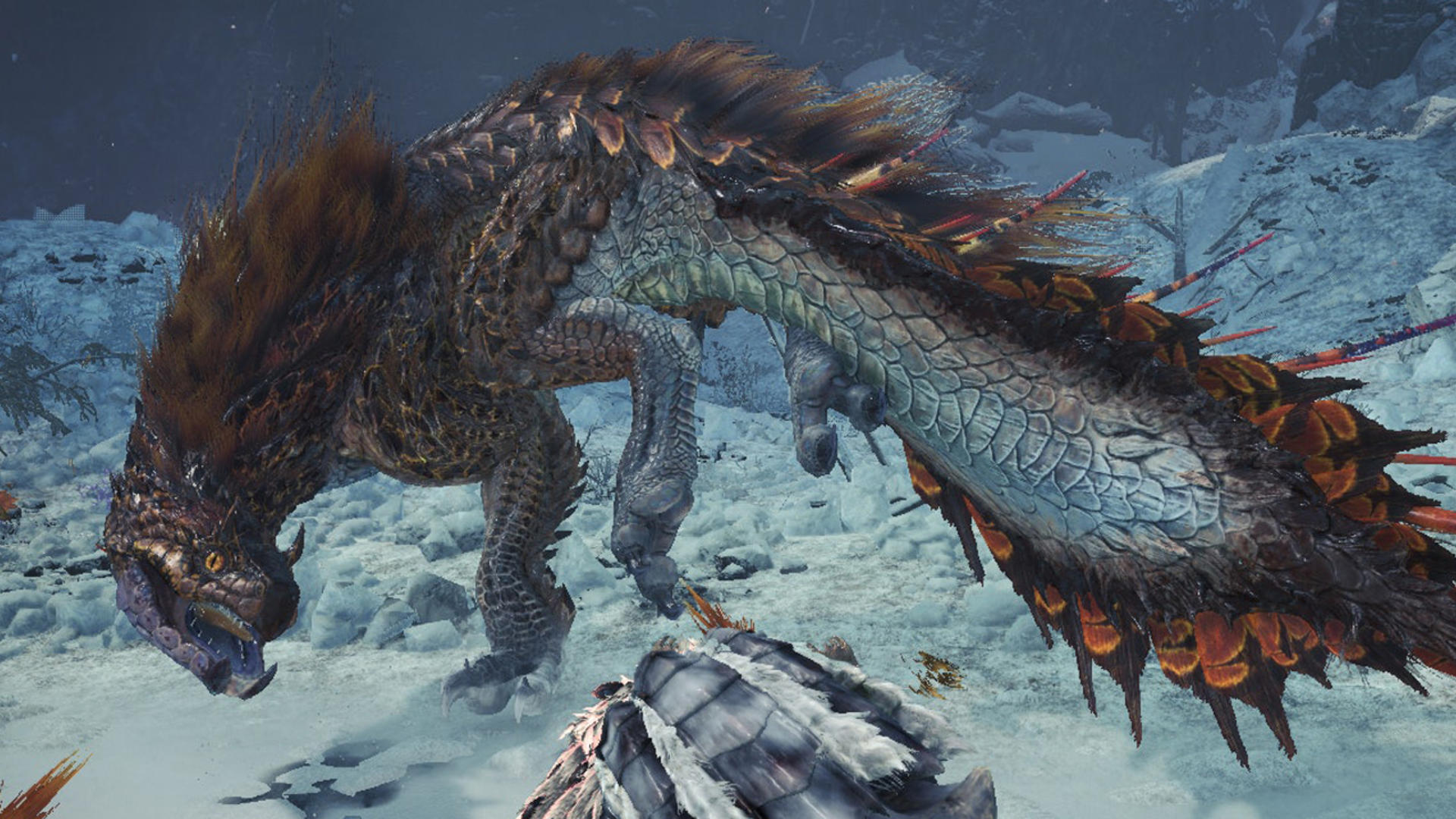
Iceborne also sees the return of a number of monsters from previous games like Tigrex, Glavenus (with an Acidic Glavenus subspecies) and the Sabre-toothed monster, Barioth. At the best of times, Barioth pushed my shit in during my time playing Monster Hunter: Generations Ultimate and that translates perfectly into Iceborne. While my familiarity with the monster has grown and improvements to the camera and general gameplay make keeping track of the monster a little more manageable, Barioth still remains an incredibly aggressive and high-stakes fight. Iceborne doesn’t mess around when it comes to throwing challenging fights your way and Barioth proves it. It doesn’t take long to encounter the monster, but it can be a difficulty wall on par with the likes of Nergigante when players first encounter it. In saying that, it is Monster Hunter and the hardcore fans are ridiculous, I can’t wait to see people killing this beast in a matter of a few minutes.
The biggest new gimmick/mechanic coming to Iceborne is the clawshot. While not a complete game changer, the clawshot is a great way to get some cheap-but-powerful shots on a monster. By hooking onto the targeted part of the monster, the player can perform a mini-mount of sorts, dealing a decent chunk of damage to the specified part. This little tool is really good when you’re trying to get specific breaks on monsters, especially the larger ones. It isn’t without its caveats, however. The monsters are still able to counter and damage you while you use your clawshot and if you use it at the wrong time you might get hit with one of the more powerful moves within a given monster’s moveset (this exact thing happened to me with Nightshade Paolumu).
In place of the traditional G-rank, Iceborne adds ‘Mastery Rank’ (it’s like I never closed Warframe). There is not a whole lot to say here. It’s functionally the same as Hunter Rank, just with a different name. Whether the new ranking is a little more nuanced or not remains to be seen.
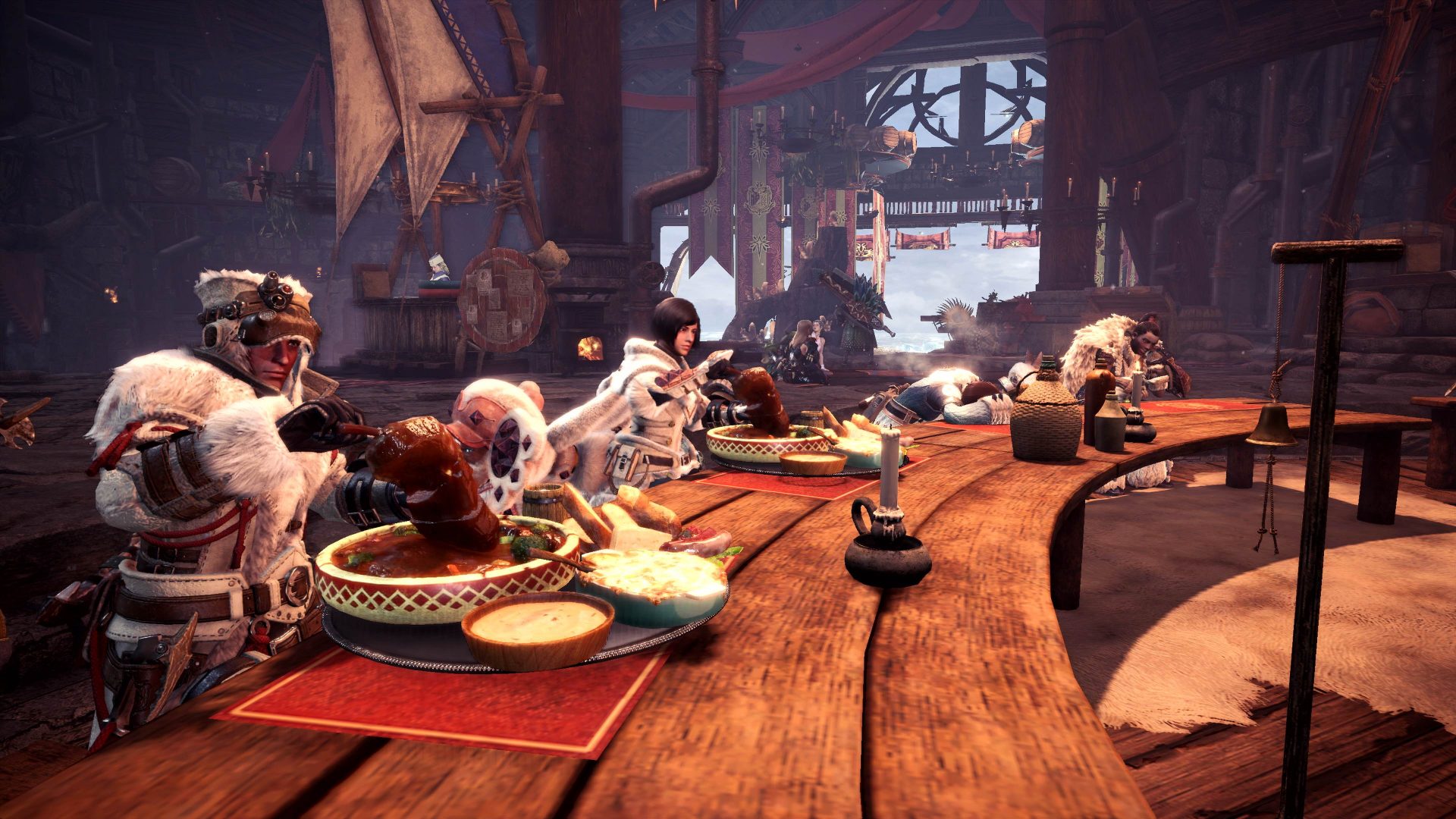
The only real complaint I have with Iceborne has to do with the new hub, ‘Seliana’. Most people who played an extensive amount of Monster Hunter: World will tell you that, while it looks awesome and it’s cool to have a bustling hub, Astera was too big for its own good. All the essential NPCs and merchants were too spread apart which often meant getting prepped took longer than it would in previous games. What Seliana lacks in sheer size (when compared to Astera) it makes up for in volume and intricacy. It makes a little more use of 3D and vertical space, which looks really cool but it can become quite cumbersome for the player. I would not be surprised to see players return to the Gathering Hub as their main prep area after playing enough Iceborne.
I went into my preview of Monster Hunter World: Iceborne with a great deal of excitement. Monster Hunter: World took me by surprise and I’ve been hooked on the series’ core gameplay hook ever since. My hands-on time with the sizeable expansion has left me even more excited for its full release for console on September 6th, 2019. It’s a bummer that PC players (including myself) will have to wait until some time in January for its PC release but Iceborne looks to make Monster Hunter: World an even better experience.
Jordan lives and breathes Dark Souls, even though his favourite game is Bloodborne. He takes pride in bashing his face on walls and praising the sun. Hailing from the land of tacos, he is the token minority for WellPlayed.





